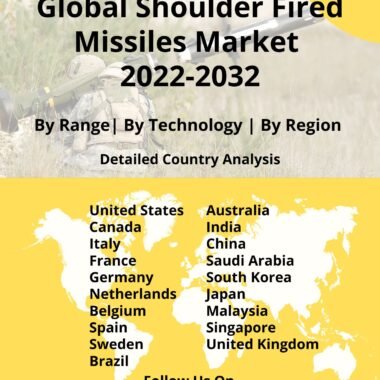Description
Unmanned Systems have been one of the key technology-based wings within the robotics domain that has gained rapid momentum within the defense sector. The technology can be used both semi-automatically and automatically, i.e. operated remotely as well as automatically. The use of this technology has been burgeoning from surveillance operations to strategic warfare and providing logistical support. The unmanned battlefield logistics and support domain as the name suggests are UAVs, UUVs, and other semi/autonomous systems that are used to transport provisions for the armed forces. Building robust UAVs with the ability to carry smaller as well as higher payloads is noted to be one of the key design parameters that are presently being worked upon.
The materials science industry has also been growing as a result of the increased demand for materials with high tensile strength as well as durability for the fabrication of UAVs. Presently the market is governed by non-metallic compounds like composites owing to their high material strength and lightweight architecture.
Major factors driving the growth of the market
Due to escalating geopolitical conflicts and border tensions, global economies have boosted their defense spending over the past year. Several of the major economies have raised their defense spending, and as a result, their procurement.
Increased investment in unmanned programs is also noted to be one of the primary factors that drive the growth associated with the unmanned battlefield logistics and support systems market. In the US, over 1,000 different initiatives were found to have supported UxV systems in the past, present, or future for Fiscal Year (FY) 2021, totaling an estimated $7.5 billion in appropriations.
The emergence of indigenous programs in international marketplaces is another element that is anticipated to fuel this market’s expansion. Economies all over the world have been making an effort to localize the production of defense-related goods and parts. There will therefore be more prospects for direct, indirect, and induced employment as a result of the increase in domestic production.
Trends influencing the growth of the market
Research suggests that the funding for E-VTOL systems is poised to drive the growth associated with the unmanned systems market. The use of this technology is poised to eliminate the need for runways and other significant downrange constraints, allowing aircraft to take off from almost anywhere. In 2021, it was noted that the organization named Tylan Air secured a contract worth USD 1.7 Million in government funding through an AFWERX AFVentures Tactical Funding Increase (TACFI) program. The funding was a part of increasing and improving the Air Force’s Agility Prime Program.
Market Dynamics
In terms of global relations and geo-political tensions, it is noted that the ongoing war between Ukraine and Russia is noted to be one of the main factors that promote the growth associated with the Unmanned Battlefield Logistics and Support domain. Daily food, water, medication, and other common provisions are to be provided to personnel during war-like situations thus instating the demand for UAV logistics and support. The use of this technology would eradicate the involvement of manual labor to transport basic provisions to the battlefield.
Brewing geo-political tensions between the US and China are noted to be another factor that is anticipated to drive the growth associated with this market. The US Navy and Marine Corps have been investing in techniques that are poised to improve technical advances in terms of restocking provisions. Traditional means of resupplying Marines are anticipated to not work effectively, especially under circumstances of animosities with China since the country has strong anti-access/area denial (A2/AD) systems that seriously endanger the logistics platforms now used by the US Navy and the Marine Corps.
Developments
As previously mentioned, UGVs can assist logistics operations by relieving ground troops of the weights that each soldier typically carries and by enabling the deployment of new capabilities at the platoon or even squad level. To purchase 459 Man Transportable Robotics System Increment II (MTRS Inc. II), 148 Small Multipurpose Equipment Transport (S-MET) systems, and 213 Common Robotic System (Individual) (CRS(I)), as well as related controllers, mission payloads, software sustainment, and other supporting technologies, $124.233 million was requested under the US Army’s Robotics and Applique Systems for FY 2022.




